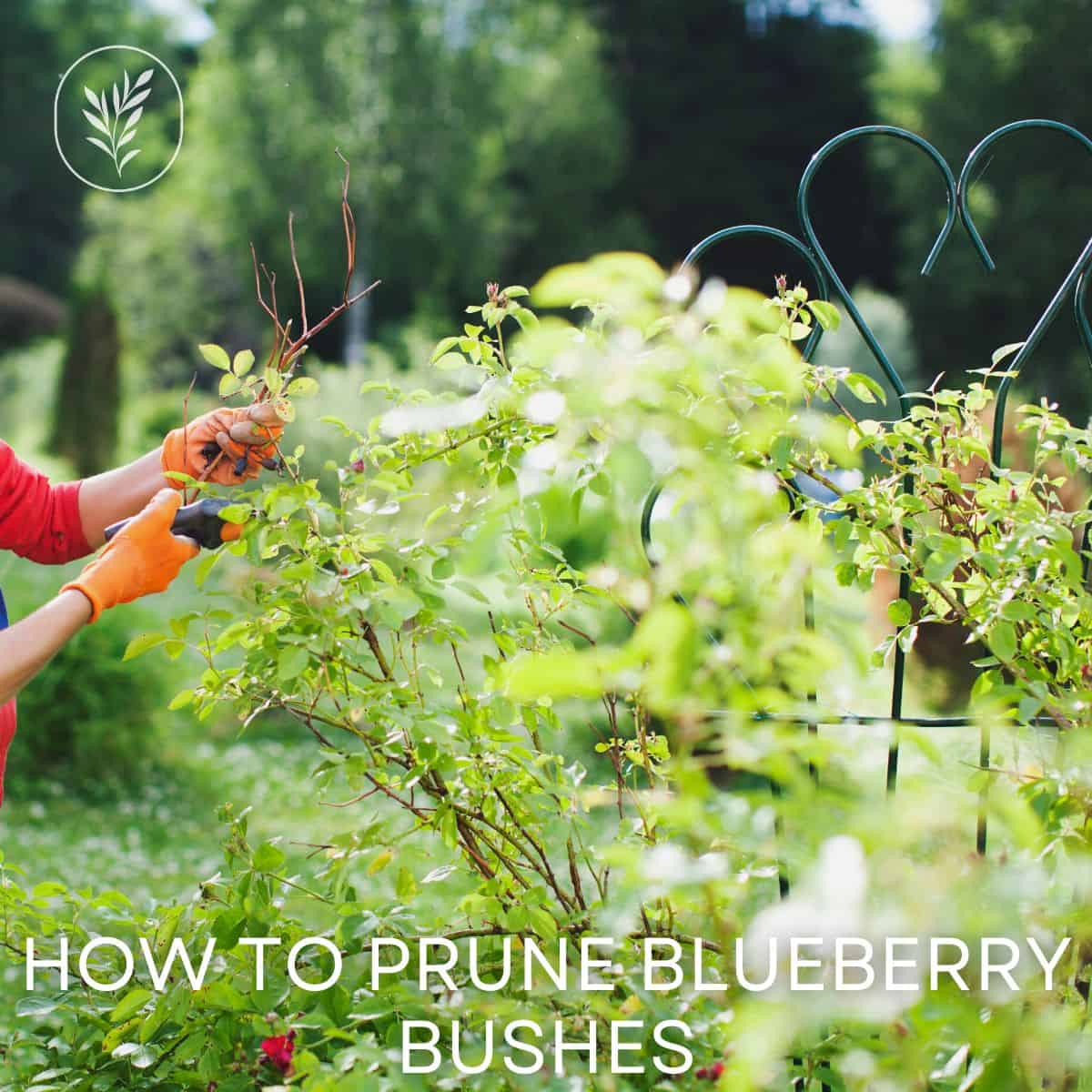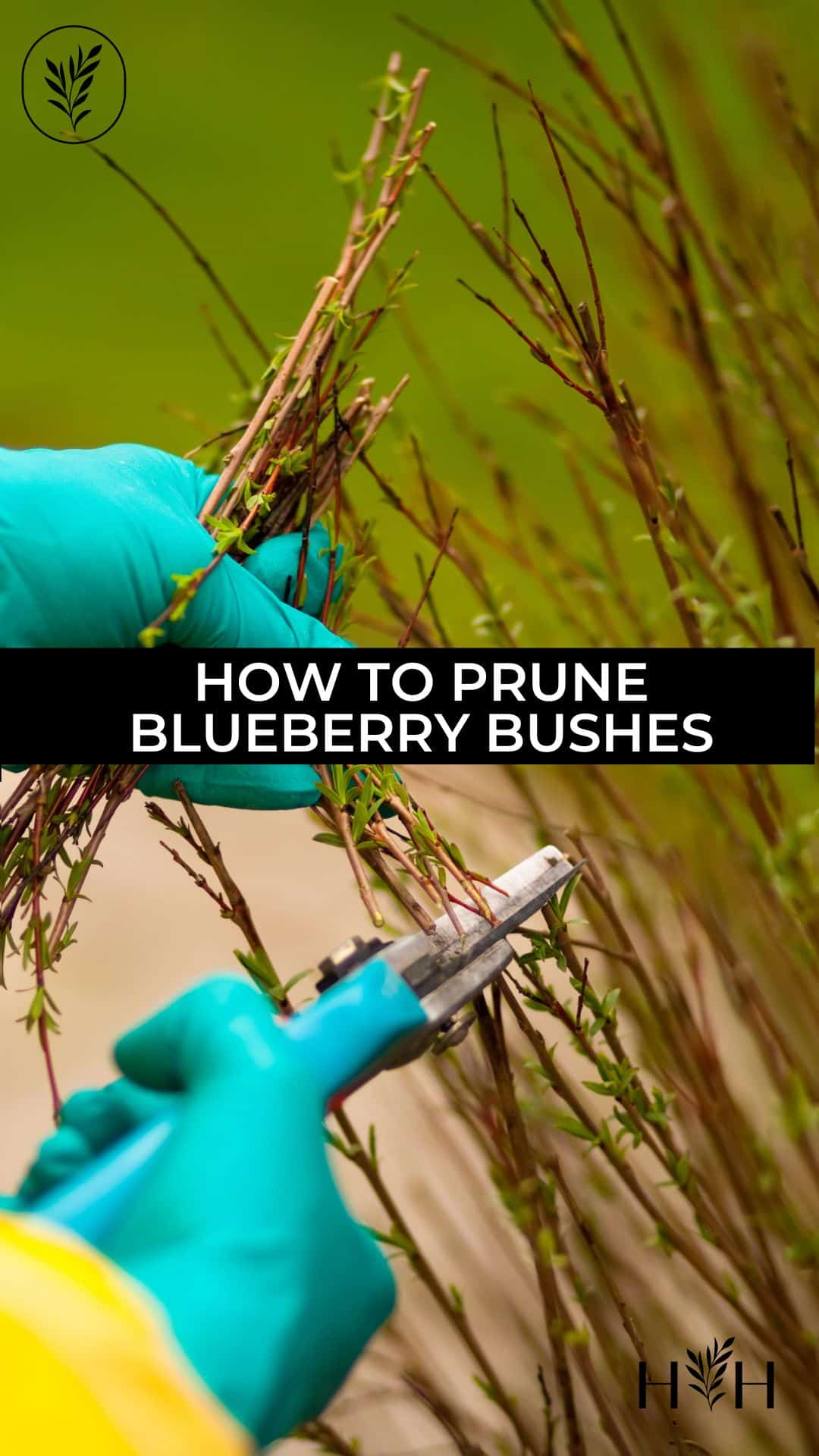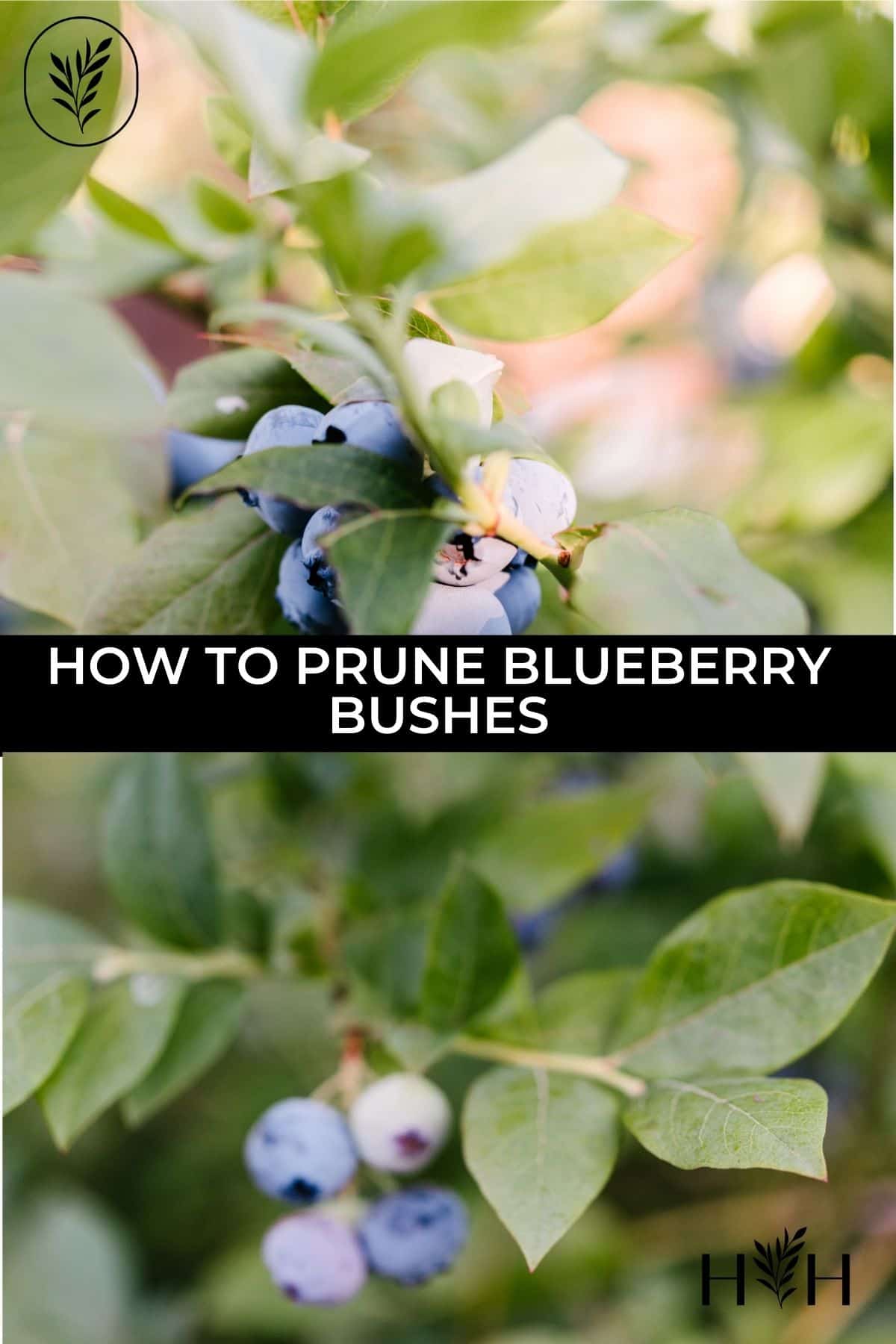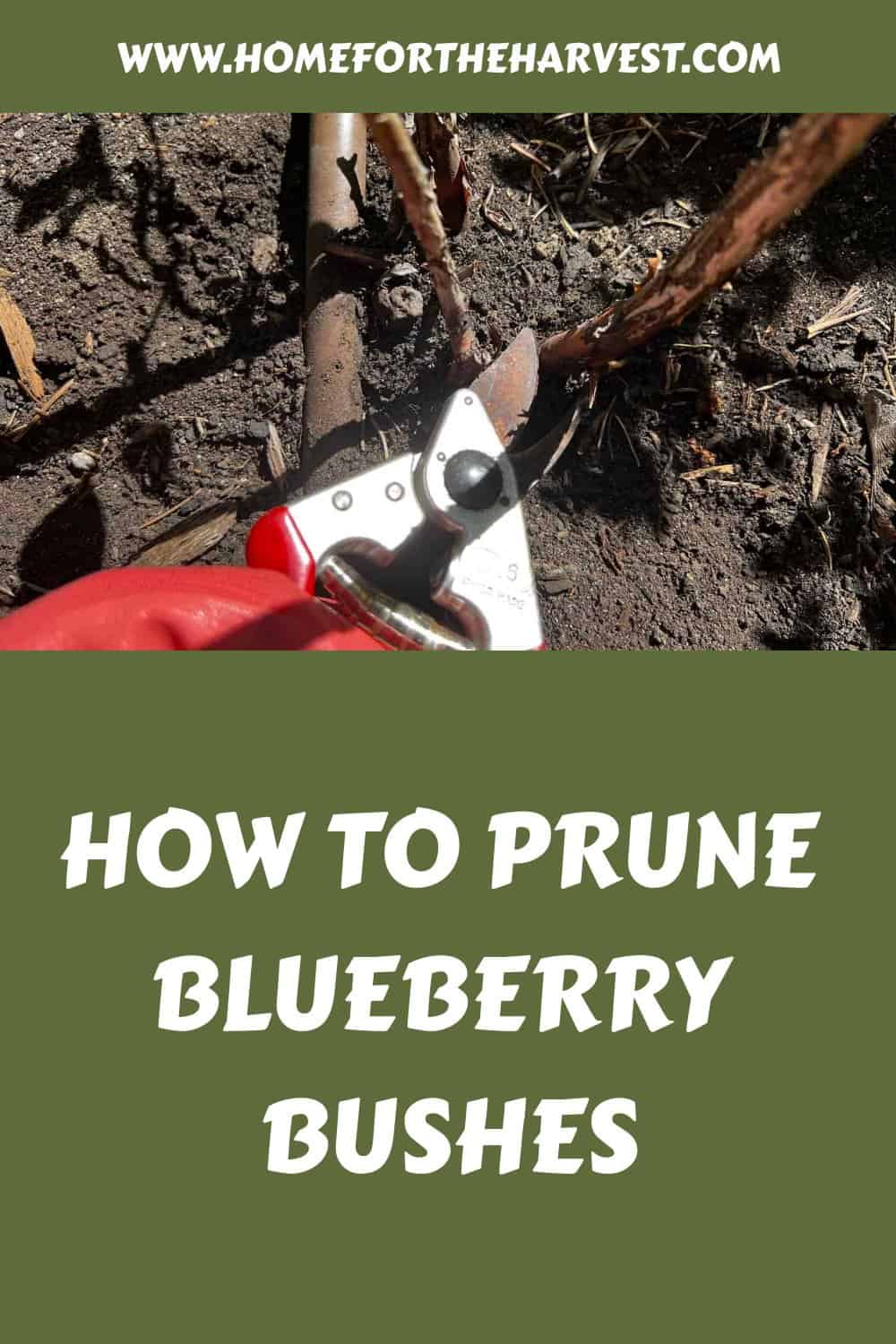Wondering how to prune blueberry bushes? Fortunately, these fruitful shrubs are easy to trim.
Blueberry bushes are pruned by removing the oldest stems to make room for productive new growth. For established shrubs over a foot tall, prune during winter dormancy by cutting off stems older than about 5-6 years back to the ground. This works for both highbush blueberries and rabbiteye blueberries. For lowbush blueberries, typically under a foot tall, the entire plant can be cut back to the ground every few years to encourage productive young growth.
Read on to learn all about how to prune blueberry bushes!
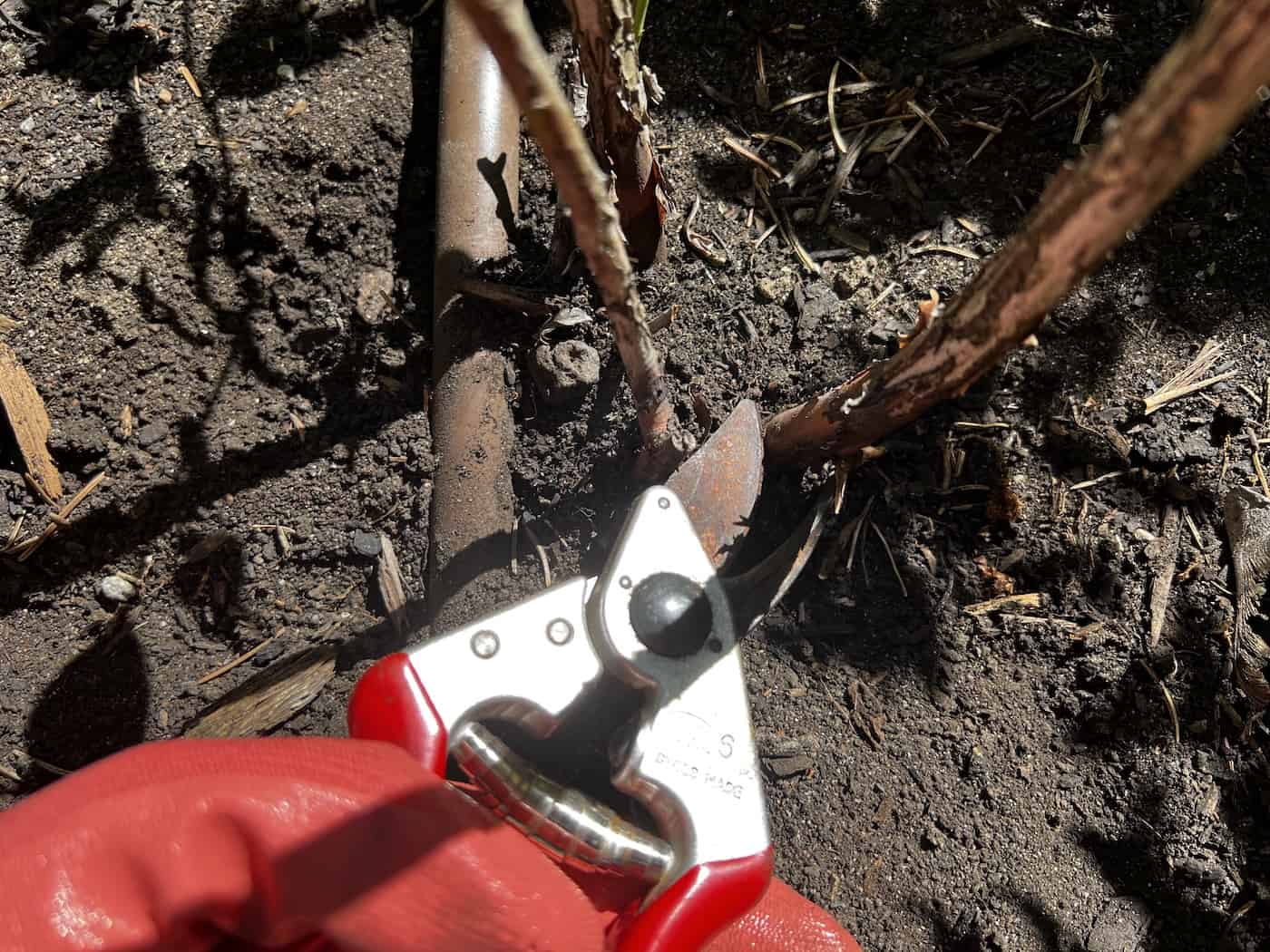
The basic methods for pruning blueberry bushes
Methods for pruning blueberries depend upon the type (species) of blueberry bush as well as the age of the plant. In general, young plants are not pruned for the first three years after planting (beyond removing dead/damaged/diseased branches).
The best time of year for annual blueberry pruning is late winter (read more about when to prune blueberry bushes). The plants are dormant at this time, making it the ideal season for routine annual pruning and for severe rejuvenation pruning.
Established plants are typically pruned by removing old branches entirely, all the way back to the soil level. For highbush and rabbiteye blueberries, this means removing only the oldest branches each year in late winter. Removing 1/3 of the oldest branches back to the ground is common practice for overgrown blueberry shrubs. For lowbush blueberries, the entire plant can be cut back to ground level every 2-3 years.
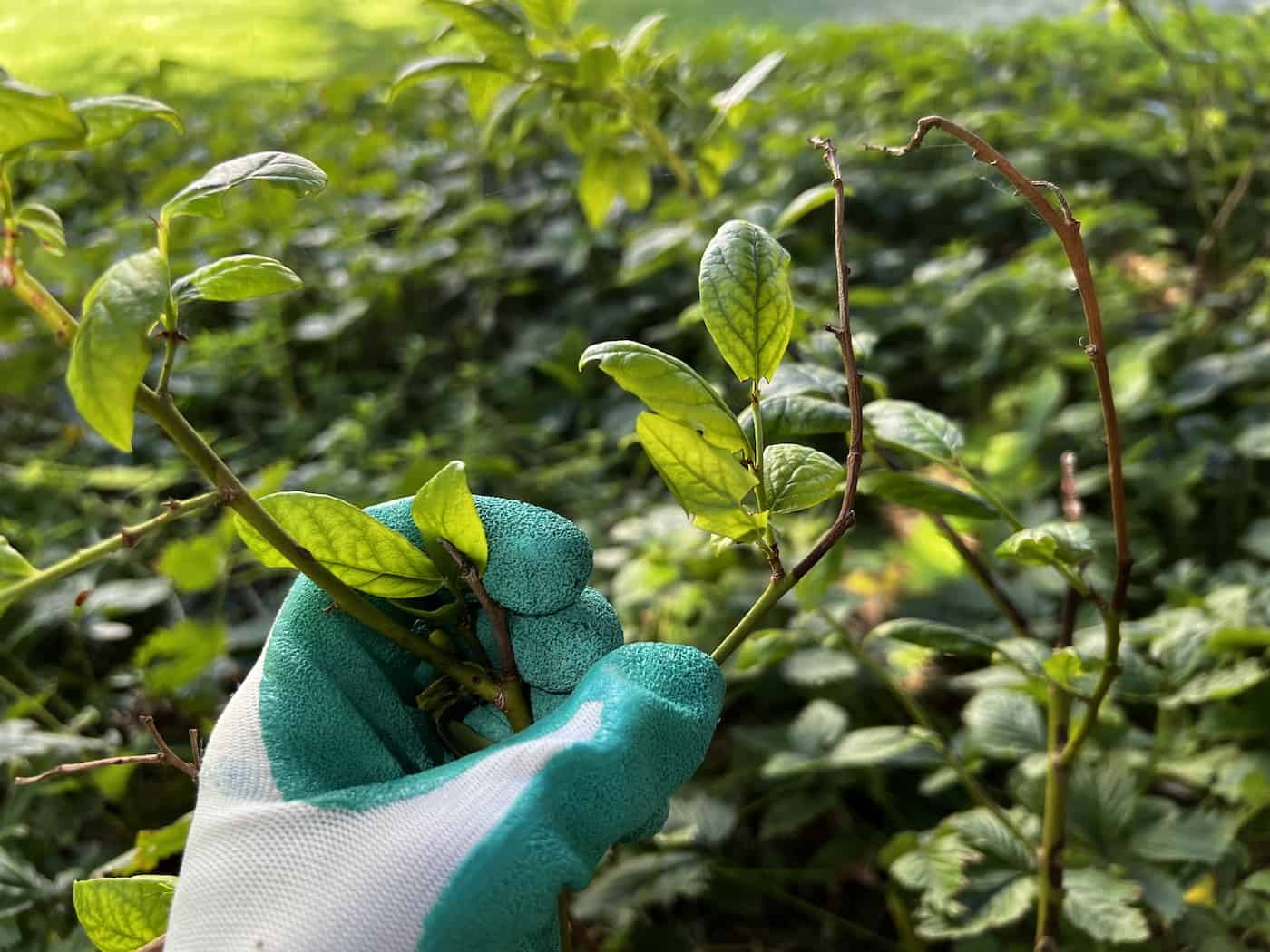
How to prune young blueberry bushes?
Young blueberry bushes require minimal pruning. While other fruit plants tend to need structural pruning in their formative years, blueberries can be left largely alone until they become established.
Blueberry plants are typically not pruned until they are 5-6 years old. Since most plants are 1 or 2 years old when they are sold at the garden center, you can usually count on growing them in place for at least three full years before the plants start to need annual pruning.
That said, there are a few maintenance pruning tasks for young blueberries. The most important step is to trim off and remove any branches that are dead, diseased, or damaged. Prune off this damaged material as soon as it’s observed and remove it from the garden/berry patch. This will help keep disease at bay, as well as provide space for new growth and increased air circulation around the remaining stems (especially in the center of the plant).
If you like, you can also prune off the flower buds or blossoms from young blueberry bushes. While this means you won’t get any berries for the first 2-3 years, it instead encourages the plant to redirect that energy into vegetative growth. Foregoing the first berries can lead to a plant that becomes more established in the landscape in a shorter amount of time.
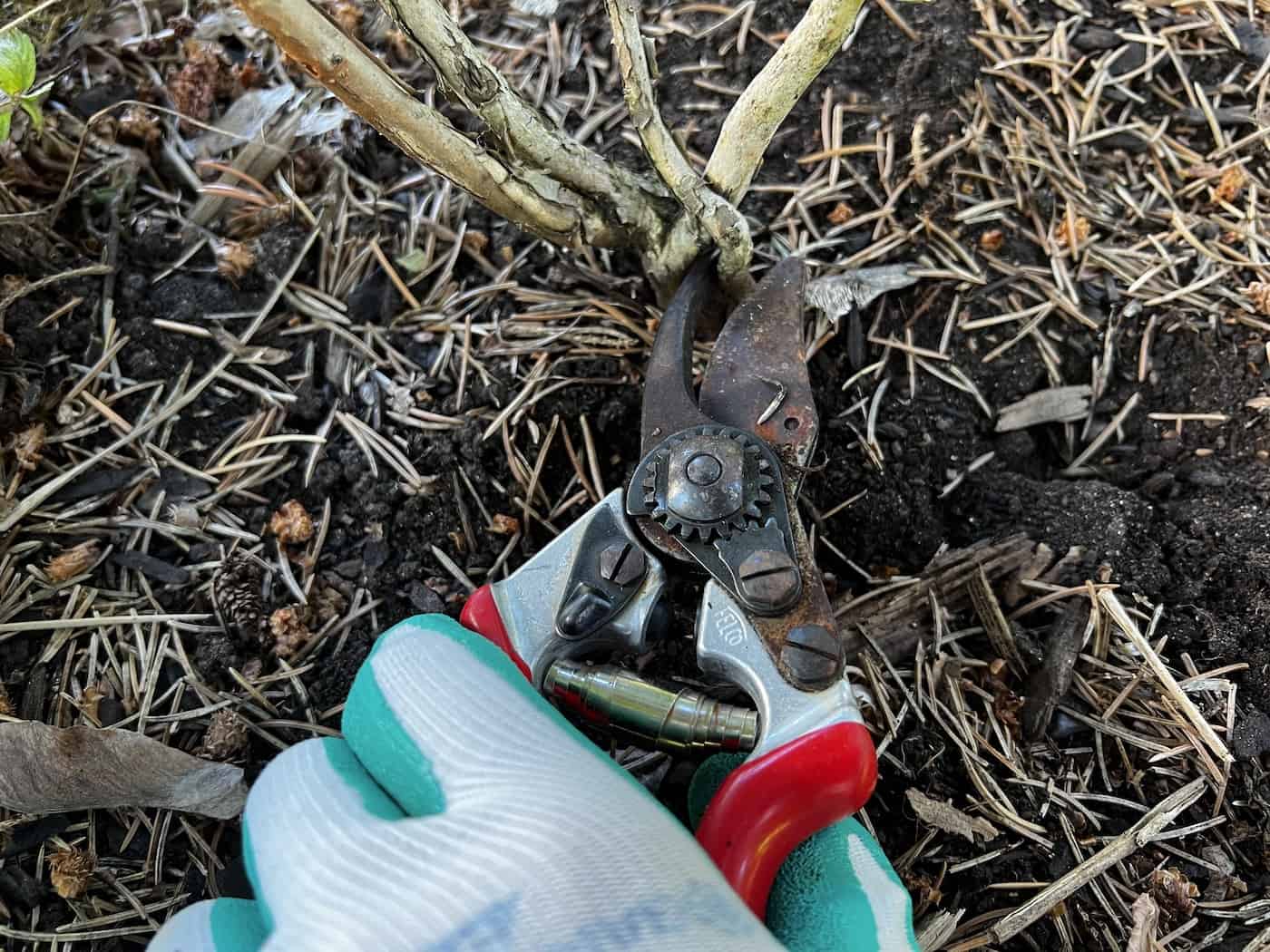
How to prune highbush blueberry bushes?
Highbush blueberries (Vaccinium corymbosum) are the most commonly cultivated type of blueberries. These plants usually reach 3-6 feet tall, depending upon the individual variety and growing conditions.
Highbush blueberry bushes grow berries on one-year-old wood. Neither very old nor very young branches will produce berries. This characteristic makes selective pruning very important to maximize fruit production.
Each main stem coming up from the ground will typically sprout new productive branches until it is about six years old. Stems older than about six years are therefore cut back to the soil level as they are unlikely to be productive. This creates room for new canes to grow up and gives space for increased air circulation and sunlight in the center of the plant.
Here are the basic steps for pruning highbush blueberries:
- Start by inspecting the plant for dead branches, as well as observing its overall shape.
- Cut off any wood that is dead, damaged, or diseased. Remove the affected portion completely, cutting back into healthy growth.
- Cut out any main stems that are crossing and rubbing on other main stems, especially if they are growing inwards towards the middle of the shrub. These stems can usually be taken off right at ground level.
- If the base is still crowded at this point, remove 1/3 of the oldest stems by trimming them off at the soil level.
- Inspect the remaining stems for weak, thin growth. Cut back young drooping stems thinner than about 1/4″ by heading them back to strong buds or existing branches.
- Look for any remaining branches with excessive amounts of fruit buds. Shorten these fruiting stems, so each branch has only five plump fruit buds.
How to prune rabbiteye blueberry bushes?
Rabbiteye blueberries (Vaccinium asheii) are the giants of cultivated blueberries. These towering plants commonly reach 10-15 feet tall! Rabbiteye blueberry bushes can be pruned using the same steps as highbush blueberries (described in the section above).
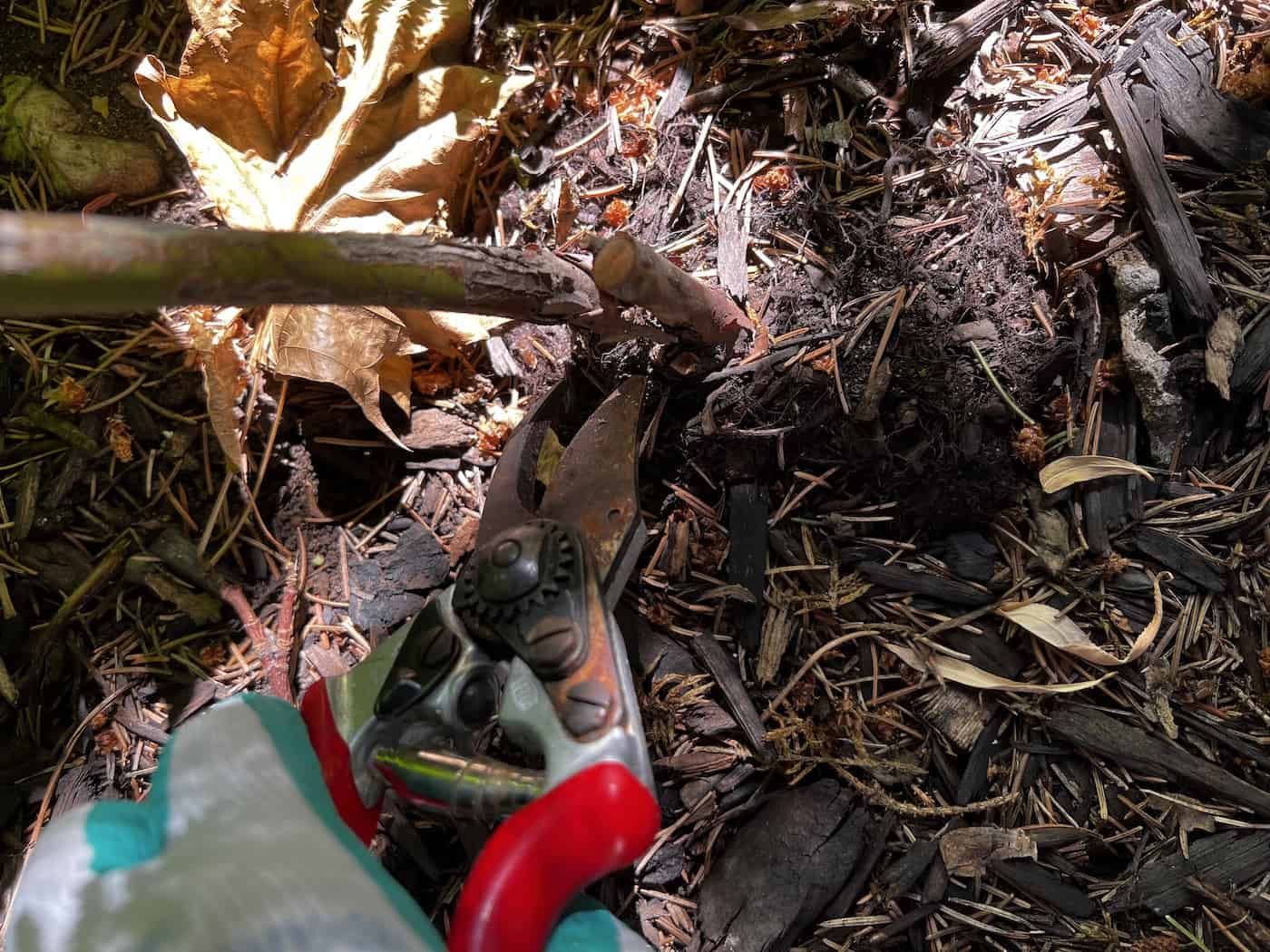
How to prune lowbush blueberry bushes?
Lowbush blueberries (Vaccinium angustifolium) are small bushy plants that typically grow to about one foot tall. This type of blueberry spreads underground by growing rhizomes, which sprout new aboveground stems as they colonize new soil. Since these blueberries also fruit on one-year-old wood, pruning mainly consists of encouraging fresh new stems to sprout up from the soil.
Lowbush blueberry plants are pruned right back to the ground every few years. It’s common to divide a patch of lowbush blueberries into three separate sections and cut only one section back to the ground each year. This allows the grower to harvest berries every year.
Each winter, the oldest plant section is cut back to ground level. These plants grow fresh stems up from the ground during the following growing season, but these stems are too young to fruit. The new stems must overwinter before they can blossom and set fruit during their second growing season.
Here are the basic steps for pruning established lowbush blueberry bushes:
- If growing multiple plants, divide the berry patch into three sections.
- Choose one section for rejuvenation pruning. If the plants are of different ages, choose the oldest plants for rejuvenation.
- Cut all the lowbush blueberry plants in the selected section back to ground level. Each stem should be trimmed right at the base. New stems should be encouraged to grow up from underground rhizomes, not from the bottom stubs of existing branches.
- Observe the rejuvenation section over the following growing season. Remove any defective branches, but mainly just allow the plants to re-establish aboveground stems so that the plants can fruit the following year.
- Each year in late winter, cut back all the plants in the oldest of the three sections.


